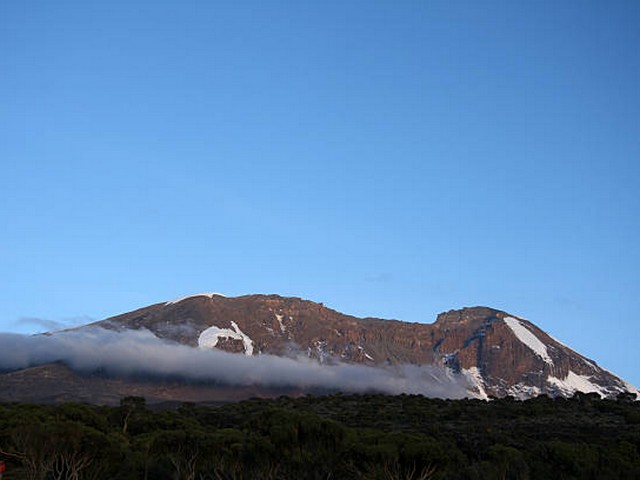How to Stay Healthy on Kilimanjaro Trek: Your Essential Guide
Ascending the mighty Mount Kilimanjaro is a dream for many adventurers. Standing tall at 5,895 meters, this majestic peak in Tanzania isn’t just a mountain; it’s a beacon of challenge, resilience, and awe-inspiring beauty. Whether you’re a seasoned climber or a determined novice, the journey to Uhuru Peak is one you’ll never forget. However, the key to a successful summit lies not just in your spirit or the strength of your limbs, but in maintaining your health throughout the trek. At Kilimanjaro Centre for Trekking and Ecotourism (KCTE), we understand the nuances of this mountain and are excited to share essential tips on how to stay healthy while conquering this giant.
Preparing for the Climb: A Strong Foundation
Train Adequately
Begin preparations months before your trip. Focus on cardiovascular fitness, strength training, and altitude acclimatization if possible. Engage in hiking, running, or cycling to build stamina, and consider using stairs or hill repeats to simulate the inclines of Kilimanjaro.
Visit Your Doctor
Schedule a check-up to assess your fitness for high-altitude trekking. Discuss vaccinations and preventative treatments for common travel illnesses like malaria. This is also the time to talk about altitude sickness prevention strategies.
Nutrition and Hydration: Fueling the Ascent
Eating Right
Your body needs plenty of carbohydrates for energy, so include whole grains, fruits, and vegetables in your diet. Proteins are crucial for muscle repair, while fats provide long-term energy, which is essential for long trekking days.
Staying Hydrated
Hydration is your best friend on the mountain. Drinking adequate water helps mitigate altitude sickness and maintains your physical performance. Aim for 3-4 liters per day, increasing intake as you ascend. Avoid or limit caffeine and alcohol, as they can dehydrate you.
On the Trail: Daily Health Practices
Pace Yourself
"Pole, pole" (slowly, slowly in Swahili) is more than just a saying; it’s essential advice. Ascending too quickly increases your risk of altitude sickness. Maintain a pace that allows you to converse without gasping for air.
Layer Up
Temperatures on Kilimanjaro can range from hot to sub-zero. Dressing in layers allows you to adjust your body temperature easily. Start with moisture-wicking base layers, add insulating layers, and top with a waterproof, windproof layer.
Sleep Well
Never underestimate the restorative power of a good night’s sleep, especially at altitude. Although sleeping might get harder as you ascend, try to get as much rest as possible to allow your body to recover and acclimatize.
Health Monitoring: Recognizing Altitude Sickness
Know the Symptoms
Altitude sickness is a serious concern on Kilimanjaro. Be vigilant for headaches, nausea, dizziness, and fatigue. If symptoms appear, inform your guide immediately. Early recognition and response can prevent more severe health issues.
Listen to Your Body
If your body signals that something is wrong, listen. There’s no shame in taking rest days or even deciding to descend if necessary. Safety always comes first.
Staying Healthy Post-Climb
Recovery Time
After summiting, give your body time to recover. Gradual descent, good hydration, and proper nutrition can help ease the transition back to lower altitudes.
Celebrate Responsibly
Reaching the summit is an exhilarating achievement. Celebrate wisely—keep alcohol to a minimum, eat well, and continue hydrating.
Why Choose KCTE for Your Kilimanjaro Adventure?
At Kilimanjaro Centre for Trekking and Ecotourism, we’re not just guides; we’re custodians of your health and safety. Our expert guides are trained in wilderness first aid and carry emergency supplies at all times. We prioritize acclimatization and customize our itineraries to maximize your summit success while keeping health as a top priority. Book your climb with us and experience the KCTE difference—where your adventure and well-being are our mission.
Conclusion
Climbing Kilimanjaro is an unforgettable journey that tests your limits and expands your horizons. Staying healthy throughout the trek multiplies your chances of a successful summit. Follow these guidelines, listen to your body, and embrace the journey. Ready to stand on the roof of Africa? Join us at Kilimanjaro Centre for Trekking and Ecotourism, where your dream climb becomes a reality.
FAQ (Frequently Asked Questions)
Q1: What is the best time of year to climb Kilimanjaro?
The best times to climb Kilimanjaro are during the dry seasons: January to mid-March and June to October.
Q2: How long does it take to climb Kilimanjaro?
Most routes take between 5 to 9 days, depending on the chosen path and your pace.
Q3: Do I need special insurance for trekking Kilimanjaro?
Yes, you should have travel insurance that covers high altitude trekking up to 6,000 meters.
Q4: What should I pack for Kilimanjaro?
Pack layers for varying temperatures, sun protection, hydration supplies, and personal medications. A detailed packing list will be provided when you book with KCTE.
Q5: How can I prevent altitude sickness?
Acclimatize properly by taking a longer route, stay hydrated, eat well, ascend slowly, and consult with your doctor about medications like acetazolamide.
Embark on your Kilimanjaro adventure with confidence and health! Remember, every step you take on Kilimanjaro is a step towards mastering your own physical and mental landscapes. Let’s reach the summit together! Book your journey with Kilimanjaro Centre for Trekking and Ecotourism today.




